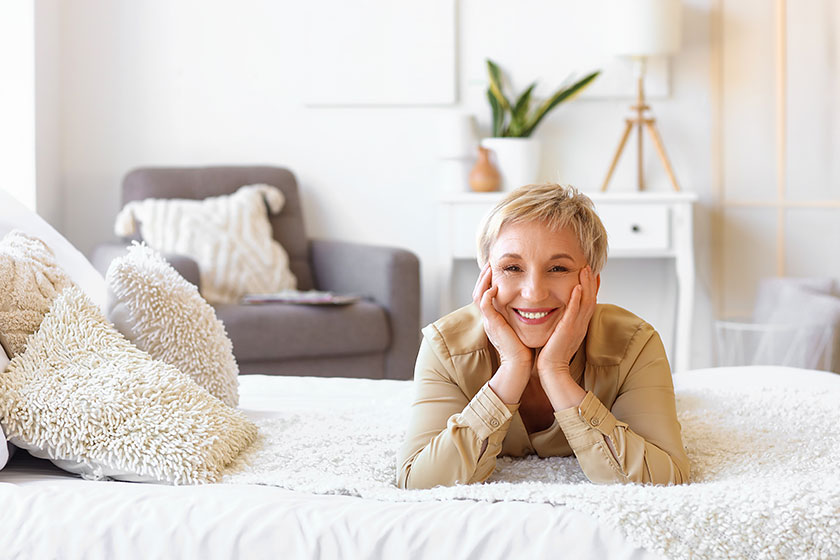Sleep is an integral part of our lives. It rejuvenates the mind and body, preparing us for the challenges of a new day. As we age, achieving restful sleep becomes even more crucial, yet often more elusive. Within the cozy confines of a retirement community, residents seek comfort and tranquility in their sleeping environment. One significant factor that can significantly influence sleep is bedroom lighting. By optimizing the lighting in our bedrooms, we can improve sleep quality and ensure a restful night.
Block Out as Much Light as Possible
In pursuing better sleep, the first step is understanding the pivotal role light plays in our sleep cycles. Our body’s internal clock, or circadian rhythm, relies on external cues like light and darkness to determine when to sleep or wake up. Excess light during bedtime can confuse this rhythm, leading to disrupted sleep.
For senior-friendly independent living communities, this means ensuring that their bedroom windows have curtains or blinds that effectively block out external lights. Even the faintest glow from a streetlamp or a neighboring building can be a disturbance. Additionally, eliminating light sources within the room, like the glow from electronic devices or a too-bright nightlight, can make a significant difference in creating a conducive sleep environment.
Set Up Your Bedtime Routine Ahead of Time
Setting the mood for sleep goes beyond just turning off the lights. It’s about creating a calming ambiance that signals your body that it’s time to wind down. Residents can benefit immensely by having a pre-sleep routine, and lighting plays a crucial role.
An hour or so before bedtime, dimming the lights in the bedroom and surrounding areas can help. This gradual reduction of light mimics the natural setting of the sun, aligning with our body’s natural inclination to sleep as it gets darker. Soft, warm lights are preferable during this time, as they don’t jolt our senses like bright, white lights. Calming activities under this soft lighting, like reading a book or listening to soft music, can enhance the pre-sleep routine. This combination of dim lighting and soothing activities can signal to the body that it’s time to rest, facilitating a smooth transition into deep, restful sleep.
Blackout Curtains Can Be a Miracle Worker
One of the simplest yet most effective ways to ensure a good night’s rest in a retirement community is by investing in blackout curtains. These are not just ordinary curtains; they’re explicitly designed to block out any form of light from entering the room. For residents who are particularly sensitive to external lighting or those living in areas with significant outdoor lighting, these curtains can be a game-changer.
The effectiveness of blackout curtains goes beyond just blocking light. They also offer additional insulation, helping to regulate the room’s temperature. This dual benefit ensures that the bedroom remains not only dark but also at a comfortable temperature conducive to sleep. For residents looking to create a perfect sleep environment, adding blackout curtains to their bedrooms can significantly improve sleep quality.
Use the Right Kind of Lightbulbs
Lightbulbs are not just about brightness; they can significantly influence the ambiance of a room. When aiming for a restful night, the type of lightbulb used in the bedroom becomes vital. Traditional incandescent bulbs, with their warm light, seem like a good choice, but they often emit a spectrum of light that can interfere with sleep.
For retirement community bedrooms, LED bulbs with a warm glow are ideal. These bulbs can offer the same warmth as incandescent ones but have the added advantage of being adjustable. Some advanced bulbs even come with features allowing residents to adjust the warmth and brightness, tailoring the room’s ambiance to their preference. By ensuring that the bedroom has the right kind of lightbulbs, residents can cultivate an environment perfect for relaxation and sleep.







